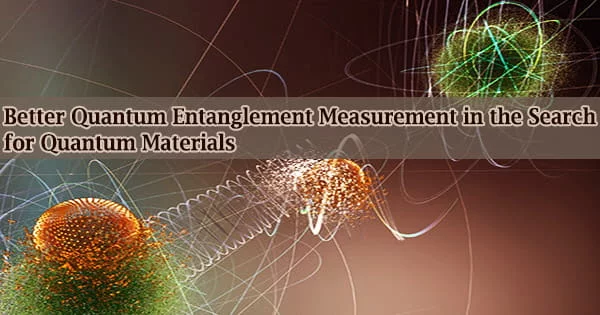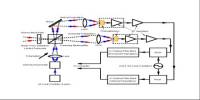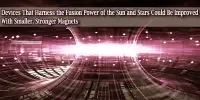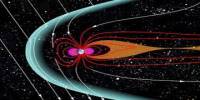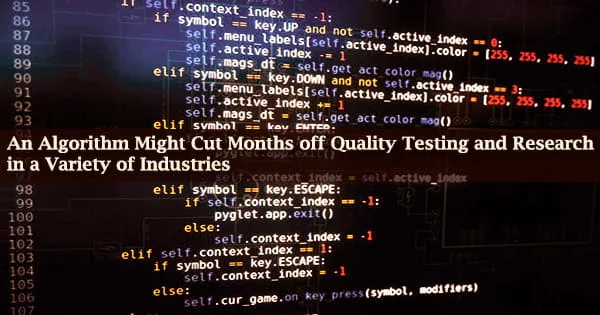A research team from the University of Hong Kong’s (HKU) Department of Physics has devised a new algorithm to detect entanglement entropy, enabling the investigation of more complete laws in quantum mechanics and bringing the use of quantum materials closer to reality. This pivotal research work has recently been published in Physical Review Letters.
Quantum materials are critical in advancing human progress. The scientific and technological community has been clamoring for more innovative quantum materials with remarkable features.
2D Moire materials like twisted bilayer graphene are playing an increasingly important role in the study of novel quantum states like superconductivity, which has no electrical resistance.
They also contribute to the creation of “quantum computers,” which outperform even the most powerful supercomputers.
However, materials can only reach “quantum state,” or the point where thermal effects no longer prevent quantum fluctuations from triggering quantum phase transitions between different quantum states or quantum phases, at extremely low temperatures (near Absolute Zero, -273.15°C) or extremely high pressure.
Experiments to see when and how atoms and subatomic particles of various substances “communicate and interact freely through entanglement” in the quantum state are excessively expensive and difficult to carry out.
The failure of the classical LGW (Landau, Ginzburg, Wilson) framework to characterize certain quantum phase transitions, nicknamed Deconfined Quantum Critical Points (DQCP), complicates the research even more.
The finding has changed our understanding of the traditional phase transition theory and raises many intriguing questions about deconfined quantum criticality. This new tool developed by us will hopefully help the process of unlocking the enigma of quantum phase transitions that has perplexed the scientific community for two decades.
Mr. Zhao Jiarui
The challenge then becomes whether DQCP realistic lattice models can be created to reconcile DQCP and QCP discrepancies. Dedicated research into the subject yields a plethora of numerical and theoretical studies with contradictory outcomes, and a solution remains elusive.
The research of quantum entanglement, which marks the basic difference between quantum and classical physics, by Mr. Jiarui ZHAO, Dr. Zheng YAN, and Dr. Zi Yang MENG from HKU’s Department of Physics, was a significant step toward resolving the issue.
The research team created a novel and more efficient quantum algorithm for measuring the Renyi entanglement entropy of objects using Monte Carlo techniques.
They measured the Rényi entanglement entropy at the DQCP using this novel technique and discovered that the scaling behavior of the entropy, i.e. how the entropy evolves with system sizes, differs dramatically from the description of traditional LGW types of phase transitions.
“Our findings helped confirm a revolutionized understanding of phase transition theory by denying the possibility of a singular theory describing DQCP. The questions raised by our work will contribute to further breakthroughs in the search for a comprehensive understanding of unchartered territory,” said Dr. Zheng Yan.
“The finding has changed our understanding of the traditional phase transition theory and raises many intriguing questions about deconfined quantum criticality. This new tool developed by us will hopefully help the process of unlocking the enigma of quantum phase transitions that has perplexed the scientific community for two decades,” said Mr. Zhao Jiarui, the first author of the journal paper and a Ph.D. student who came up with the final fixes of the algorithm.
“This discovery will lead to a more general characterization of the critical behavior of novel quantum materials, and is a move closer towards the actualization of application of quantum materials which play a vital role in propelling human advancement,” Dr. Meng Zi Yang remarked.
The models
The research team chose two representative models, the J1-J2 model hosting normal O(3) QCP and the J-Q3 model hosting DQCP, to test the algorithm’s efficiency and superior power, as well as to demonstrate the distinct difference between the entanglement entropy of normal QCP and DQCP, as shown in Image 2.
Nonequilibrium increment algorithm
The research team developed a highly paralleled increment algorithm based on earlier approaches. The primary idea of the technique, as shown in Image 3, is to partition the entire simulation effort into many smaller tasks and then employ large CPUs to parallelly perform the smaller tasks, drastically reducing simulation time.
The team was able to run the two models previously mentioned with great efficiency and superior data quality because to this enhanced method.
